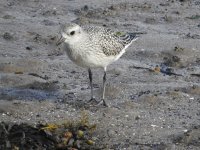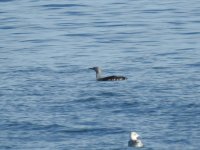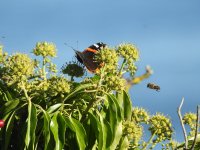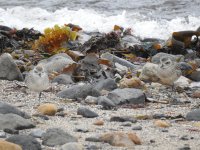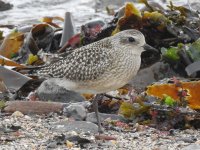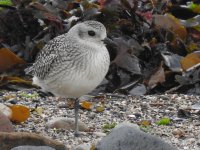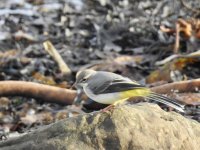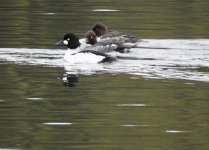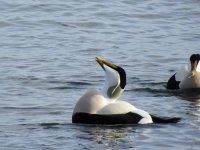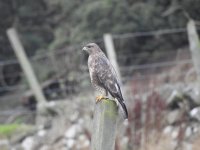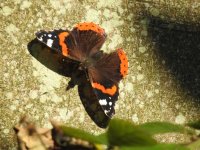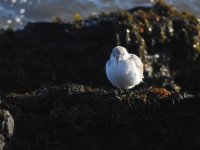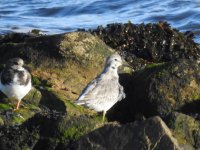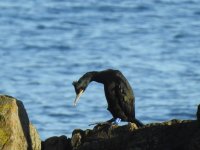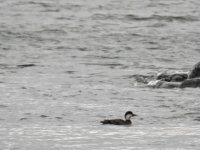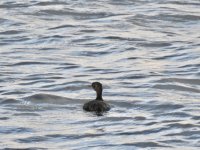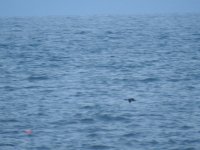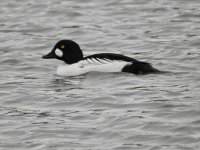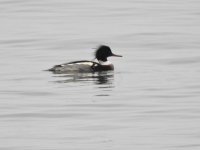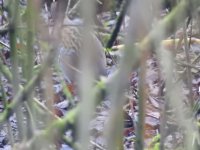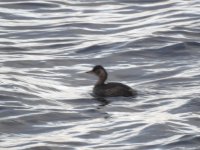My weekend was a total write off, as my son tested positive for Covid. He is not very ill with it, just cold type symptoms, but the whole family has had to self isolate until we got PCR tests. I got the all clear yesterday, so as I am double jabbed, I am allowed out and about again. I am not totally comfortable with that, so I am avoiding people and enclosed spaces (hides) as an extra precaution.
Soon after getting the all clear, I was arriving at Seafield. It was quite warm in the brilliant sunshine, and felt more like a spring day than a winter one. The birds I found though were definitely of winter type. First came a distant male Red-breasted Merganser. My first of the season. Then on the rocks between the harbour and the tower, I found a couple of waders that are fairly scarce along the strip.
First was a Sanderling, that looked too big to be a Sanderling, but I think the impression came from it being highlighted by a dark background, and having it sat there puffed up. Usually when I see them, they are scuttling along the tide line, looking sleek.
The second visiting wader was a Knot. Took me an age to work out what it was, because originally I could not see its legs, and it had its head tucked under its wing. Eventually it changed position, and my ID suspicions were confirmed.
While on the patch, I bumped into someone who was doing a Shag survey for the Isle of May. I used to send in my ring readings, but rarely got a response, so assumed that because I am within sight of the Isle, that my records were of no value, and therefore stopped recording a few years ago. The surveyor has convinced me otherwise, and assured me that they have improved their response to records sent in to them. As such, I have committed to resuming recording and submitting records again.
Today, a quick visit to the loch in cold, blustery conditions. Sadly, one of this year's crop of cygnets met a gruesome end in the boat sheds car park, when it was run over by a hit and run driver. The driver may just have been a walker, or I suppose even a birder, but the increased traffic in this area, caused by increased water sport means this type of incident comes as no surprise.
Most of the birds seemed to have their heads down given the conditions, but there were still eight Goldeneye on the water, and between the loch and the marsh, I relocated one of the Water Rail. Those little fellows are pretty fast across the ground. I hope they are fast enough, as a Stoat has recently been photographed in the area.
A definite lack of winter thrush this year. I also note that the Rowan berry crop was vastly reduced on last year's produce, so possibly a connection there. Plenty of Hawthorn sloes though. They don't seem to vary as much as the Rowan.




